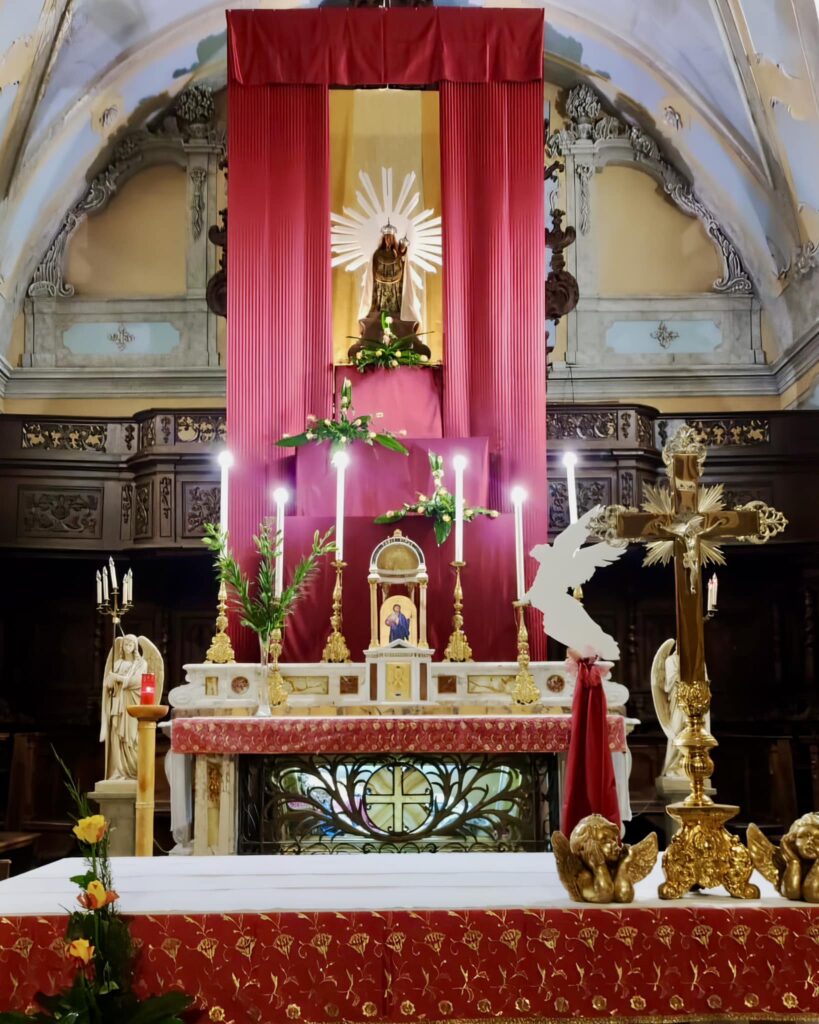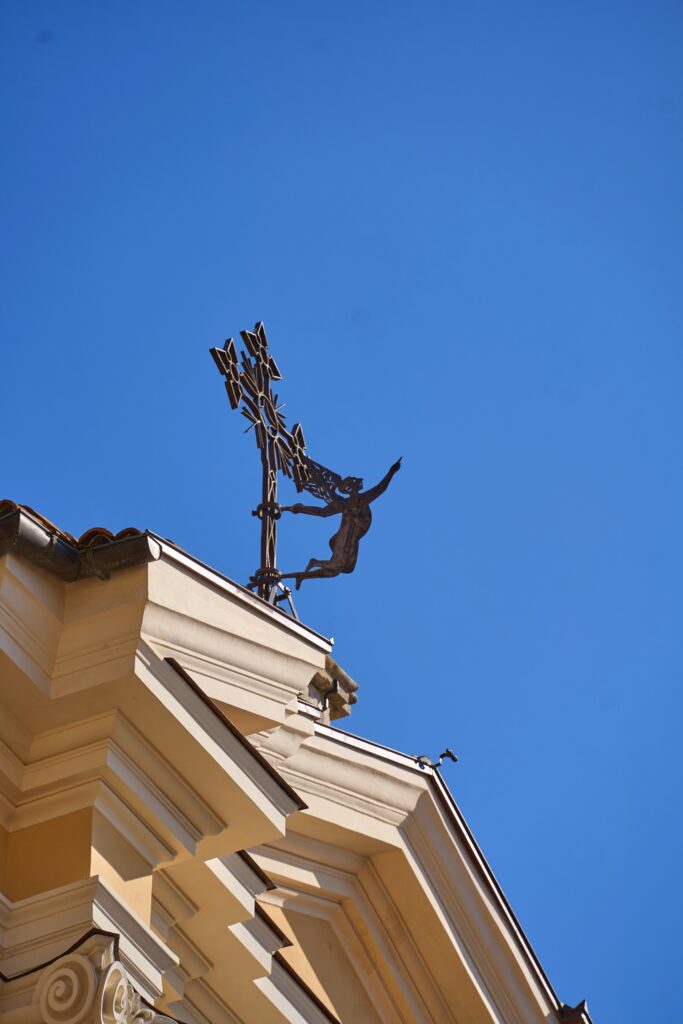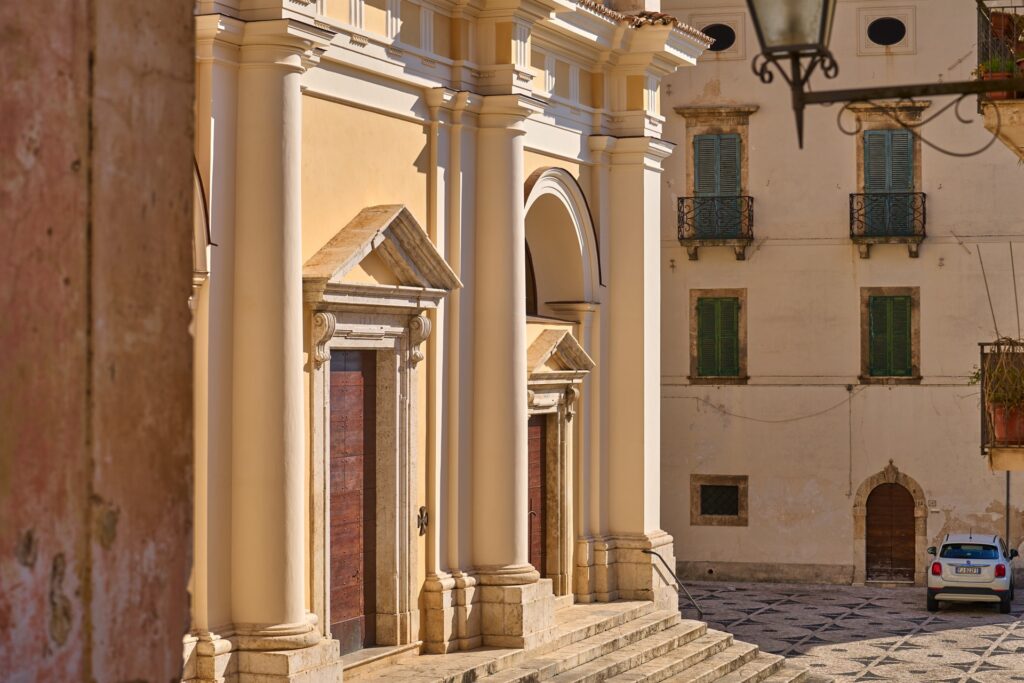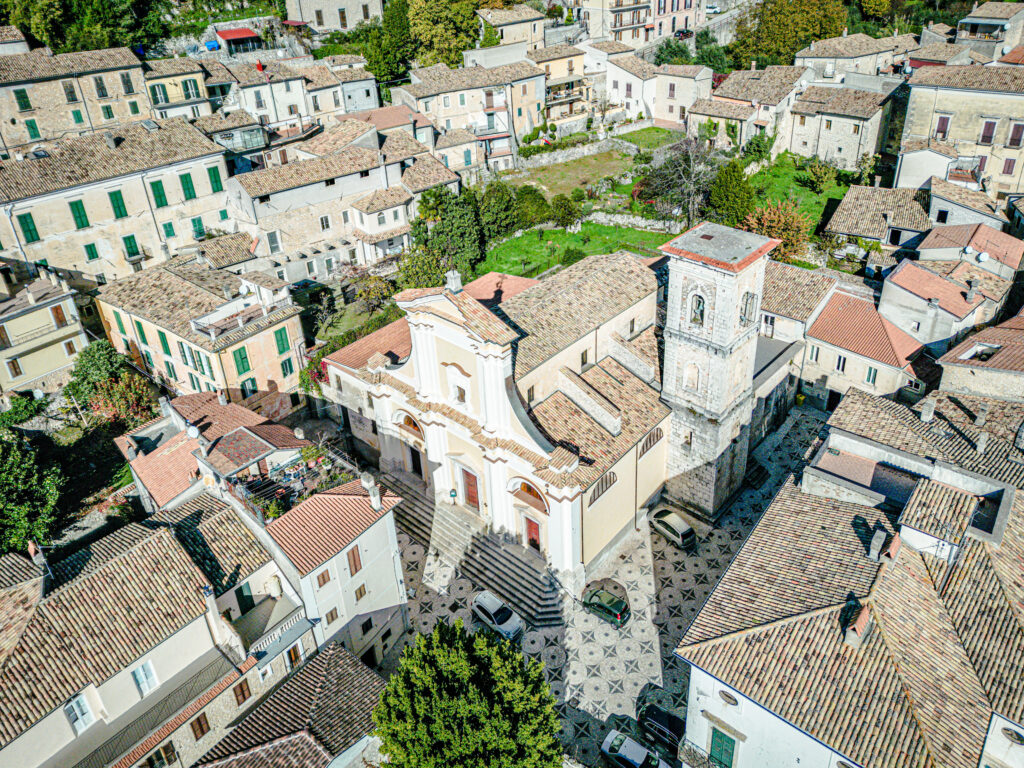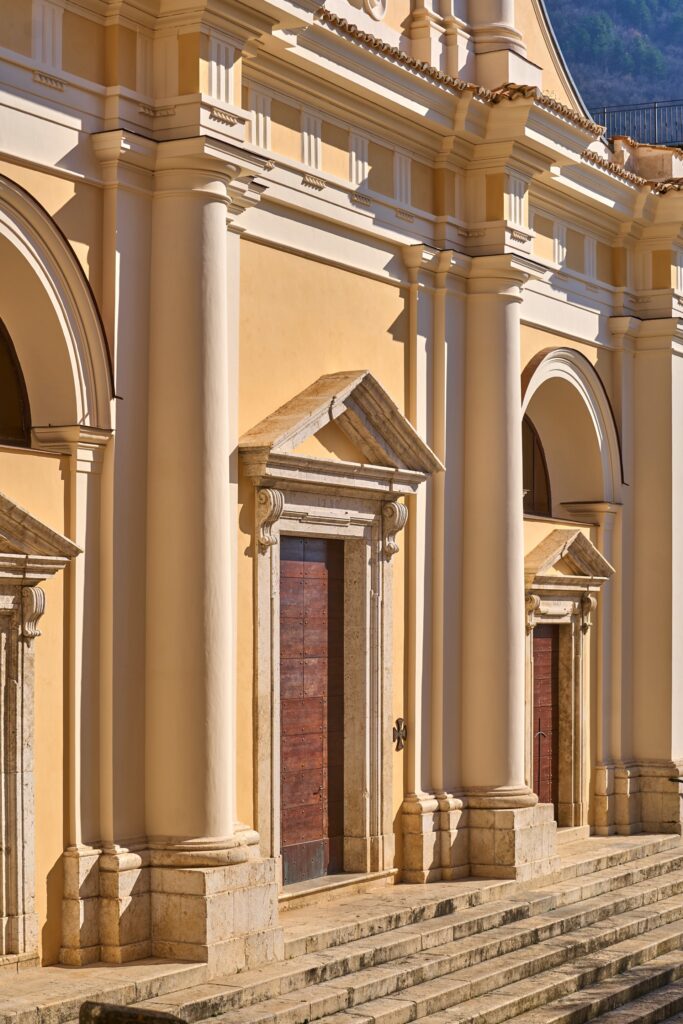Cathedral (Church of St. Mary and St. Marcellus Pope)
Church, Historical landmark
The origins of the cathedral, dedicated to St. Mary and St. Marcellus the Pope, are lost in the Middle Ages when the town expanded into the valley. In the eighteenth century the church was enlarged (the plan became basilica-like, the facade was limited by pilasters and leaning columns) and embellished with decorations that highlight an elegant Baroque style.
Of particular interest is the pipe organ. According to some scholars it is the work of Cesare II Catarinozzi, the "Stradivarius of the organ." The instrument is characterized by its classical sound system, due to the eight-foot main register, the filling up to the "vigesimanona," flute and human voice. Also of excellent workmanship is the wooden case. In the past, the clergy consisted of ten canons "very literate, costumati, restretti et di buona conscientia et conversatione" having the Rector Abbot and Archpriest at their head, and eight chaplains.
Under the high altar, in a glass urn, is kept the body of St. Constance, a martyr of the early Christian persecutions whom hagiography has it that she was killed by a sword strike to the throat. Buried in Rome in the catacombs of St. Agnes, her remains were moved to the cathedral in 1756. Since then, on the last Sunday in August, the people of Sandonate celebrate the saint with a solemn procession and a shard and onion market.
This church is a must-see for those visiting the city and is an important place of worship for Sandonatans.
Of particular interest is the pipe organ. According to some scholars it is the work of Cesare II Catarinozzi, the "Stradivarius of the organ." The instrument is characterized by its classical sound system, due to the eight-foot main register, the filling up to the "vigesimanona," flute and human voice. Also of excellent workmanship is the wooden case. In the past, the clergy consisted of ten canons "very literate, costumati, restretti et di buona conscientia et conversatione" having the Rector Abbot and Archpriest at their head, and eight chaplains.
Under the high altar, in a glass urn, is kept the body of St. Constance, a martyr of the early Christian persecutions whom hagiography has it that she was killed by a sword strike to the throat. Buried in Rome in the catacombs of St. Agnes, her remains were moved to the cathedral in 1756. Since then, on the last Sunday in August, the people of Sandonate celebrate the saint with a solemn procession and a shard and onion market.
This church is a must-see for those visiting the city and is an important place of worship for Sandonatans.
Do you want to visit this attraction?
Book your vacation now.
Cathedral (Church of St. Mary and St. Marcellus Pope),
P.za Giustino Quadrari,
1,
03046 San Donato Val di Comino FR,
Italy
-
P.za Giustino Quadrari, 1, 03046 San Donato Val di Comino FR, Italy
Details
Suitable for
- Couples, Families, Groups, Solo travelers
Best season to go
- All the seasons
Duration / time of visit
- Up to 1 hour
Type of tour
- This attraction is part of a guided tour, Small groups tour, Solo tour, Private tour
Are audio guides provided?
- On request
Available languages
- English, Italian
Ticket price
- Does not require a ticket






